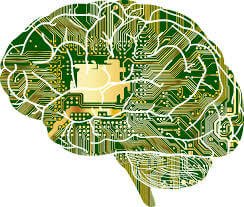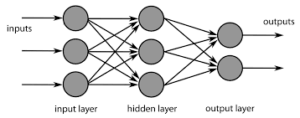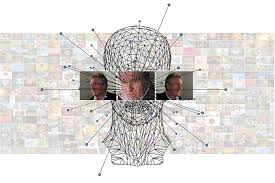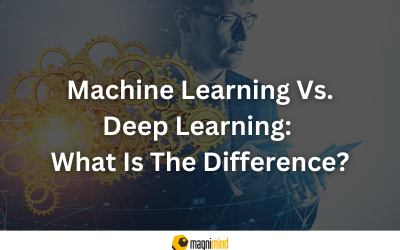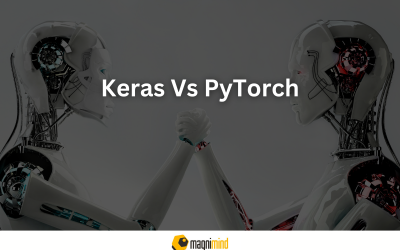During recent years, artificial intelligence has received tremendous attention and almost everyone is talking about it. In the field of artificial intelligence, machine learning is probably the most talked about branch from which the subset of deep learning has emerged. Deep learning is considered as the game-changer in the tech landscape. In this post, we’re going to help you understand the key elements that form a perfect deep learning structure guide, so that you can channel your efforts toward the right direction.
What is deep learning?
In its simplest form, deep learning, also known as deep machine learning or deep structured learning, is a subset of machine learning and refers to neural networks that have the ability to learn the input data’s increasingly abstract representations. These days, implementation of deep learning techniques can be found to a great extent, from self-driving cars to academic researches.
What sets deep learning apart?
If you follow prominent job portals, you can find that there’s a significant number of deep learning professionals job positions almost all of which are paying really well. Now, you may wonder why do companies hire these professionals? Or, what can such a professional bring to them? Let’s have a look.
Quality and accuracy
Every company wants quality and sometimes work produced by human employees come inferior and with errors. This is particularly true for data processing repetitive tasks. However, a worker powered by deep learning is capable of developing new understandings and producing high-quality, accurate results.
With the help of deep learning, software robots can understand spoken language, recognize more images and data, and work more efficiently. These are the main reasons why companies across the globe are hiring deep learning professionals.
Increased cost and time benefit
In its simple form, neural networks can be considered as trainable brains. These networks are provided with information and trained to do tasks, and they’ll use that training together with new information and their own work experience when it comes to accomplishing those tasks.
Implementation of deep learning in business can save the company a significant amount of time and money. In addition, when time-consuming or repetitive tasks are done efficiently and quickly, employees are freed up to take care of creative tasks that actually need human involvement.
Deep learning vs. Machine learning
As deep learning is a branch of machine learning, general people often become confused about when to use over the other. In general, when it comes to large datasets, deep learning should be the ideal technique while traditional machine learning models can do perfectly well with small datasets.
Deep learning outperforms traditional machine learning in the context of complex problems like speech recognition, natural language processing, image classification etc. Another key difference between them is that deep learning algorithm needs a long time to be trained because a large number of parameters while traditional machine learning algorithms can be trained within a few hours. Interpretability is another reason for which many companies prefer using machine learning over deep learning.
Guide to deep learning structure
Deep learning is a complex field consisting of several components. In this deep learning structure guide part of the post, we’ve put together the major elements that you’d need to master upon.
Also, we’ve designed this deep learning guide assuming you’ve a good understanding of basic programming and basic knowledge of probability, linear algebra and calculus. Let’s have a look at the guide.
Fundamental of machine learning
It’s imperative to get a good understanding of the basics of machine learning before you dive into deep learning. Basically, it’s distributed in three types of learning – supervised, unsupervised and reinforced learning.
In deep learning, a significant amount of machine learning techniques like logistic regression, linear regression etc are used. There’re lots of resources available that can help you accomplish this goal. You should also learn Python at this stage. Try to get yourself introduced to scikit-learn, a widely used machine learning library. At the end of this stage, you should have a good theoretical as well as a practical grasp of machine learning.
Introduction to deep learning
The first thing you should do is understand the frameworks of deep learning. Deep learning professionals mainly need to work with algorithms which are inspired by neural networks. Though there’re lots of resources available online that you can use to learn the basics of deep learning, it’s recommended to take a course from a reputed institute.
Try to get access to a GPU (graphics processing unit) to run your deep learning experiments. If possible, try to read some research papers in deep learning as they cover the fundamentals. At this stage, try to pick any of the three – PyTorch, TensorFlow or Keras. Whatever you choose, be sure to become very comfortable with it.
Introduction to neural networks
A neural network comes with a layered design that contains an input layer, a hidden layer, and an output layer. It functions like the human brain’s neurons such as receiving inputs and generating an output.
There’re several types of artificial neural networks that are implemented based on a set of parameters needed to determine the output and mathematical operations. The functions of these neural networks are utilized in deep learning which helps in image recognition, speech recognition, among others.
Fundamentals of Convolutional Neural Networks
Put simply, Convolutional Neural Networks are multi-layer neural networks which consider the input data as images. It’s widely used in facial recognition, object detection, image recognition and classification etc. The best thing about Convolutional Neural Networks is the need for feature extraction is eliminated. The system learns to perform feature extraction.
The fundamental concept of CNN is, it utilizes convolution of images and filters to produce invariant features that are passed on to the next layer. In the next layer, the features are convoluted with a different set of filters to produce abstract and more invariant features and this process continues till we get final output/feature that is invariant to occlusions.
Understanding unsupervised deep learning
Unsupervised learning is a complex method with the goal of creating general systems which can be trained using a very minimum amount of data. It comes with the potential to unlock unsolvable problems which were done previously. This method is widely used to solve the problems created by supervised learning.
Introduction to natural language processing
Natural language processing is focused on making computers capable of understanding and processing human languages in order to get them closer to the human-level understanding of language. This domain mainly deals with developing computational algorithms that can automatically analyze and represent human language. It can also be used for dialogue generation, machine translation etc.
Introduction to deep reinforcement learning
Through this technique, software or a machine can learn to function in an environment by itself. Though some may compare reinforcement learning with other forms of learning like supervised and unsupervised learning, there remains a major difference. It’s that reinforcement learning isn’t provided with outcome instructions, instead it follows trial and error mechanism to develop appropriate outcomes.
Major applications of deep learning
Here’re some real-life applications where deep learning is used heavily.
Speech recognition
You’ve probably heard about Apple’s intelligent assistant Siri, which is controlled by voice. The tech giant has started working on deep learning to develop its services even more.
Instant visual translation
You’re probably aware of that deep learning is utilized to identify images which contain letters and once they’re identified, those can be turned into text and translated, and the image can be recreated using that translated text. In general, this is called instant visual translation.
Automatic machine translation
You may have already heard about the translation ability of Google. But did you know what’s the technology behind Google Translate? It’s machine translation that tremendously helps people who cannot communicate between themselves because of the difference in language. You may ask that this feature has been around for some time now, so there shouldn’t be anything new in this. Using deep learning, the tech giant has completely reformed the machine translation approach in Google Translate.
Here, we’ve only mentioned some popular real-life cases that use deep learning extensively and showing promising results. There’re lots of other applications where deep learning is successfully being implemented and demonstrating good results.
Final thoughts

So, this is the overview of deep learning in a simple form. Hopefully, by now you’ve got a clear idea of what should be a good deep learning structure to follow in order to become a deep learning professional.
With the entire business landscape steadily leaning toward artificial intelligence together with massive amounts of data being generated every single day, the future surely holds a great place for deep learning professionals. The key reason behind this is the supremacy of deep learning in terms of accuracy when properly trained with an adequate amount of data. If you’re interested to step into the field, probably this is the best time to start your journey because the big data era is expected to provide massive amounts of opportunities for advancement and new innovations in the field of deep learning.

